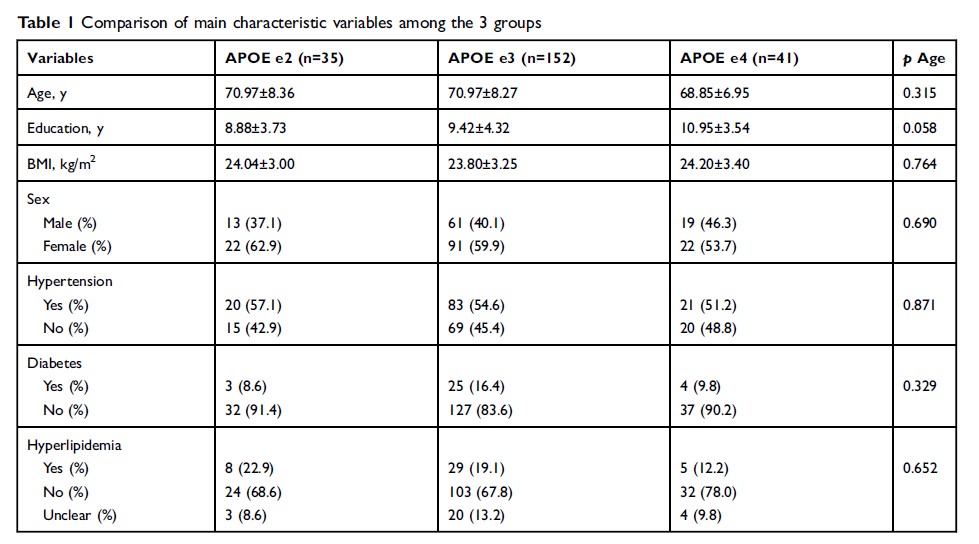9 0 8 1 0
论文已发表
注册即可获取德孚的最新动态
IF 收录期刊
- 2.6 Breast Cancer (Dove Med Press)
- 3.9 Clin Epidemiol
- 3.3 Cancer Manag Res
- 3.9 Infect Drug Resist
- 3.6 Clin Interv Aging
- 4.8 Drug Des Dev Ther
- 2.8 Int J Chronic Obstr
- 8.0 Int J Nanomed
- 2.3 Int J Women's Health
- 3.2 Neuropsych Dis Treat
- 4.0 OncoTargets Ther
- 2.2 Patient Prefer Adher
- 2.8 Ther Clin Risk Manag
- 2.7 J Pain Res
- 3.3 Diabet Metab Synd Ob
- 4.3 Psychol Res Behav Ma
- 3.4 Nat Sci Sleep
- 1.9 Pharmgenomics Pers Med
- 3.5 Risk Manag Healthc Policy
- 4.5 J Inflamm Res
- 2.3 Int J Gen Med
- 4.1 J Hepatocell Carcinoma
- 3.2 J Asthma Allergy
- 2.3 Clin Cosmet Investig Dermatol
- 3.3 J Multidiscip Healthc

载脂蛋白 Eε4 等位基因对健康老年人语言功能和执行功能的短期不良反应
Authors Li W, Qiu Q, Sun L, Li X, Xiao S
Received 8 August 2018
Accepted for publication 10 June 2019
Published 10 July 2019 Volume 2019:15 Pages 1855—1861
DOI https://doi.org/10.2147/NDT.S183064
Checked for plagiarism Yes
Review by Single-blind
Peer reviewers approved by Dr Andrew Yee
Peer reviewer comments 3
Editor who approved publication: Dr Yu-Ping Ning
Background: The 4 allele of the apolipoprotein E (APOE) gene is known as a risk factor for cognitive impairment. How APOE ϵ polymorphism affects the language and executive functions of healthy aging subjects remains less clear.
Purpose: In this follow-up study, the relationship between APOE status and cognitive performance across various cognitive domains in healthy individuals (without dementia or mild cognitive impairment (MCI)) over 60 years old was investigated.
Patients and methods: Based on multiplex amplification refractory mutation system polymerase chain reaction (PCR), 228 subjects (n=228; mean age: 70.59±8.07 years old; male %=40.8%) were divided into three groups, e2 (ϵ2/ϵ2 and ϵ2/ϵ3, n=35), e3 (ϵ3/ϵ3, n=152), and e4 (ϵ2/ϵ4, ϵ3/ϵ4, and ϵ4/ϵ4, n=41).
Results: There was no statistical difference (p >0.05) in the general demographic data and neuropsychological tests among the three groups on the baseline; however, e4 group showed a greater drop rate (p <0.05) versus non-carriers on verbal fluency (e2: −0.043±0.221; e3: -0.081±0.239; e4: 0.069±0.329) and Webster picture completion (e2: 0.055±0.281; e3: 0.083±0.428; e4: 0.438±1.280) over the subsequent one year.
Conclusion: The findings suggest that possession of the APOE ϵ4 allele predicted a higher decline on tasks of language function and executive function in healthy elderly. And further research is required to determine whether strengthening the training of language function and executive function will delay the occurrence of cognitive impairment.
Keywords: APOE, language function, executive function, healthy elderly
